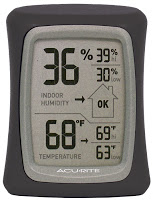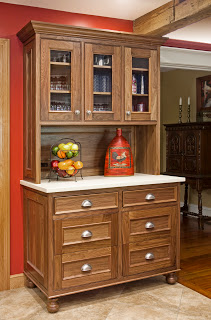Humidity and Your Home
Now that July 4th has passed, the heat of summer is definitely here! The hot humid days have started and it is perfect swimming weather and time for summer fun. While your family is having summertime fun, this same hot humid weather can be destroying your wooden home furnishings, including your cabinetry.
During the hot, humid summer you start to see changes in your home. Your gaps in your wooden floors get smaller and your drawers and doors on wooden furniture are bit more snug. During the cold dry winter months you noticed wider gaps in your wood floors and maybe panels on wooden do ors appeared to shrink. You could see some unfinished wood or finishing lines. You are wondering – what happened?
ors appeared to shrink. You could see some unfinished wood or finishing lines. You are wondering – what happened?
In a nutshell, the wooden products in your home are adjusting to the humidity level in the atmosphere. During the winter months the air is “dry” because cold air retains less moisture and when we heat the air the relative humidity becomes lower. When you have “dry air” moisture is actually being drawn out of the wooden furniture in your home until an equilibrium state is reached. That is why you will see gaps in your wood floors, doors, cabinets and why doors and drawers aren’t quite as tight.
The opposite effect happens when that moist summer air rolls in. Warmer air holds more moisture and the dry wood in your home will absorb that moisture until an equilibrium state is achieved. This causes wood to swell, or become slightly larger. In technical wood geek terms, wood is hygroscopic, which refers to its property of changing to atmospheric humidity.
To control the expansion and contraction of wood, you want to establish moisture/humidity control in your home. Moisture is controlled in homes with proper ventilation, control of air infiltration, heating, cooling and controlling humidity with either a dehumidifier or a humidifier, which adds moisture to a home. With an inexpensive thermometer and hygrometer you can measure the temperature and humidity level in your home. We highly suggest that everyone use a thermometer an hygrometer in your homes to  monitor the indoor environment. You can consult qualified specialists to help you design an indoor environmental control system that is appropriate for your home.
monitor the indoor environment. You can consult qualified specialists to help you design an indoor environmental control system that is appropriate for your home.
The environmental protection agency recommends that homes maintain a relative humidity level between 30% and 50%. The EPA recommends normal indoor temperatures for winter to range between 67.5 F and 75.5 F and summer indoor temperatures range between 73 F and 80 F. If you really want to maintain pristine environmental climate control you can look at museum quality standards. Generally you can think of museum quality climate control as keeping the temperature at 70 degrees Fahrenheit and the relative humidity at 50% (Rh%). Ideally, these two conditions do not change or don’t change more than 10 degrees Fahrenheit and 10% Rh within 24 hours.
Whether you target EPA guidelines or museum quality standards one of the important points here is to try to maintain the stability of the temperature and relative humidity in your home. Remember that the moisture content in your wood is trying to reach equilibrium. Keeping a consistent temperature and relative humidity level will allow the wood’s moisture content to be stable a nd therefore your wood will be stable – no more (or a lot less) expansion and contraction. The expansion and contraction of wood in your cabinetry and furniture can cause the wood to shrink, crack, split and it will also cause problems for the cabinetry/furniture finish. To help protect your wooden home furnishings you must control temperature and relative humidity.
nd therefore your wood will be stable – no more (or a lot less) expansion and contraction. The expansion and contraction of wood in your cabinetry and furniture can cause the wood to shrink, crack, split and it will also cause problems for the cabinetry/furniture finish. To help protect your wooden home furnishings you must control temperature and relative humidity.
If you prefer interior wood details that remain constant between seasons, then keeping a stable indoor climate will increase your enjoyment of your wooden home furnishings and interior wood elements. But, keep in mind, you don’t need a sophisticated moisture control system in your home to enjoy beautiful floors, cabinets and other interior wood elements, as long you understand that wood is a natural product and it will respond to the loss of or introduction of moisture from season to season.

